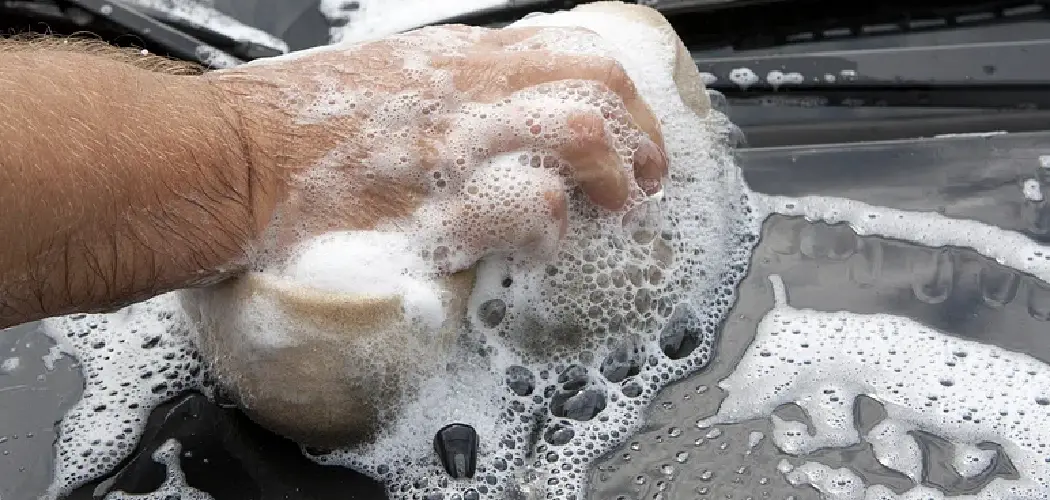Maximizing visibility on the road is paramount for safe driving, especially in adverse weather conditions. Volkswagen vehicles equipped with headlight washers offer a convenient feature to ensure clear and unobstructed headlights. Understanding how to use the headlight washer system in your VW not only enhances driving safety but also contributes to the overall maintenance of your vehicle.
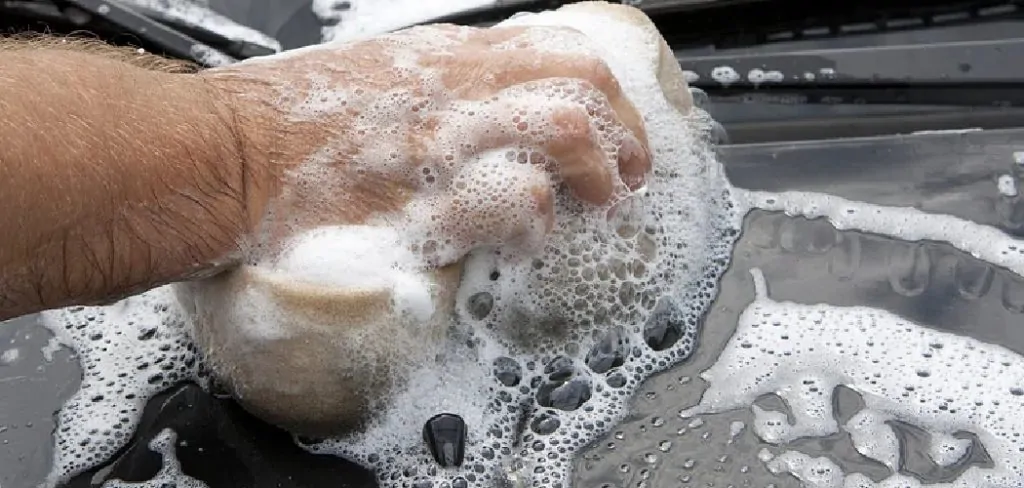
This article serves as a comprehensive guide on how to use headlight washer vw, providing step-by-step instructions to optimize its functionality. From activating the washers to ensuring proper fluid levels, this guide empowers VW owners to make the most of this innovative feature, ensuring that headlights remain clean and effective for a safer and more enjoyable driving experience, particularly when facing challenging weather conditions on the road.
Importance of Using Headlight Washers for Visibility and Safety
The importance of using headlight washers cannot be overstated when it comes to achieving optimal visibility and ensuring road safety. Headlights covered with road grime, salt, and other debris can significantly reduce light output, impairing the driver’s ability to see the road ahead clearly.
Furthermore, obscured headlights can also diminish the visibility of your vehicle to other drivers, increasing the risk of accidents. Regular use of headlight washers, particularly when driving in adverse weather conditions such as snow, sleet, or mud, helps to maintain the maximum intensity of the headlights, thereby improving the driver’s vision and reaction time.
In summary, headlight washers play a crucial role in maintaining the cleanliness and functionality of your vehicle’s headlights, which is an essential component for safe driving.
Understanding the Headlight Washer System in VW Vehicles
The headlight washer system in VW vehicles is a feature designed to enhance your driving safety by providing a mechanism to clean the headlights automatically. It consists of a reservoir filled with washer fluid, pumps, and nozzles that are strategically aimed at the headlights. When activated, the system pumps fluid from the reservoir through the nozzles, which spray the fluid with significant force onto the headlight lenses.
This process effectively removes dirt, grime, and residue that can accumulate while driving. Knowing how to properly operate and maintain this system is key to ensure it functions as intended every time you need it. In the following sections, we will delve into the steps for using the headlight washer system, tips to maintain optimal performance, and troubleshooting common issues.
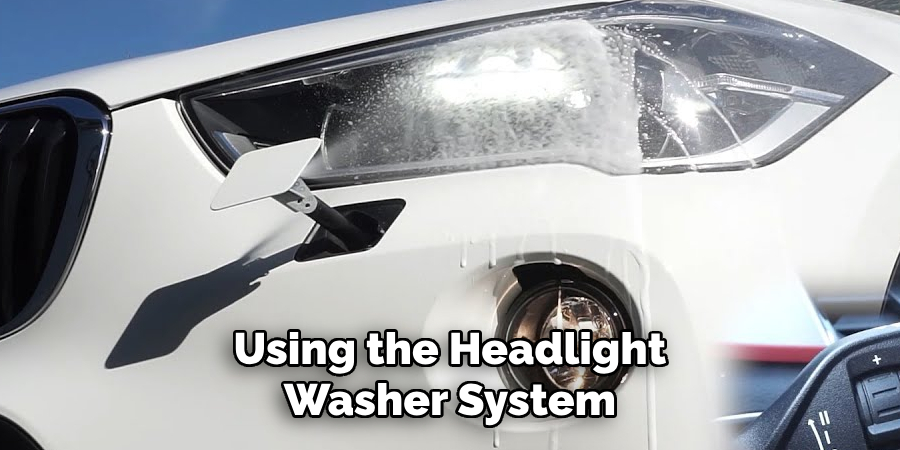
Components of the Headlight Washer System
A typical headlight washer system in VW vehicles is composed of several key components that work in conjunction to ensure your headlights remain clean:
- Reservoir: Holds the washer fluid and is usually shared with the windshield washer system.
- Pumps: These are responsible for pressurizing and circulating the washer fluid from the reservoir to the nozzles.
- Nozzles: Mounted close to the headlights, they aim and direct the fluid onto the headlight lenses with enough force to dislodge debris.
- Control Module: An electronic component that activates the headlight washer system at predetermined intervals or when a manual command is initiated by the driver.
- Hoses and Connectors: A network of tubing and connectors that transport the washer fluid from the reservoir to the nozzles.
- Washer Fluid: A specially formulated liquid designed to clean without freezing in cold temperatures or leaving residue on the headlights.
Understanding these components and their functions is the first step in effectively using and maintaining the headlight washer system in your Volkswagen.
Automatic vs. Manual Headlight Washers in VW Vehicles
Volkswagen vehicles come equipped with either automatic or manual headlight washer systems, each with distinct functionalities to suit different driver preferences and situations.
- Automatic Headlight Washers: These systems are engineered for convenience and efficiency, activating at regular intervals when the headlights are on and the windshield washer is used. The headlight washer system may also trigger based on specific sensors that detect the accumulation of debris on the headlight surface, ensuring that cleaning occurs exactly when needed without driver intervention.
- Manual Headlight Washers: Manual systems, on the other hand, provide the driver with full control over when to activate the headlight washers. Typically, a separate button or control within the driver’s reach can be pressed to operate the washers, allowing for targeted cleaning in response to sudden visibility impairments. This manual option is valuable for drivers who prefer direct control or those who encounter dirty conditions more frequently.

Understanding the differences between automatic and manual headlight washer systems can help VW drivers make informed decisions about their preferential use and ensures that they can effectively benefit from this feature under various driving conditions.
Preparing to Use Headlight Washers
Prior to engaging the headlight washer system, it’s imperative to ensure the vehicle is adequately prepared to avoid any potential issues. Start by checking the washer fluid level in the reservoir to confirm there is a sufficient supply of the cleaning solution. It’s recommended to use a washer fluid with antifreeze properties in cold climates to prevent the fluid from freezing. If necessary, top up the reservoir with the appropriate fluid.
Additionally, ascertain the cleanliness and functionality of the nozzles to guarantee an unobstructed spray onto the headlights. In the case of manual washer systems, familiarize yourself with the location and operation of the control button.
Lastly, it’s sensible to inspect the headlight lenses for any signs of damage, as forceful impact from the washer jets on compromised lenses could cause further damage. Ensuring these preparatory steps are followed helps maintain the effectiveness of the headlight washers and prolongs the operational life of the system.

10 Steps How To Use Headlight Washer VW
1. Identify Headlight Washer Controls:
Locate the headlight washer controls in your Volkswagen. In most models, these controls are integrated into the windshield washer control stalk. The headlight washer function is often indicated by a symbol resembling a headlight with water spray. Pressing this control will activate the headlight washer system. To turn it off, simply release the control.
2. Turn on the Ignition:
Before activating the headlight washer system, ensure the ignition is turned on. This allows the necessary electrical systems to operate and ensures that the washer fluid pump can dispense fluid to the headlights. Once the ignition is on, you can proceed with activating the headlight washer system.
Additionally, make sure that your vehicle is in park or neutral before turning on the ignition. This is important for safety reasons and prevents any potential accidents while operating the headlight washer system.
3. Engage Windshield Washer Function:
Activate the windshield washer function by pulling or pushing the windshield washer control stalk, typically located on the steering column. This action triggers the windshield washer fluid to spray onto the windshield.
It’s important to note that the headlight washer system is often integrated with the windshield washer system. So, when you activate the windshield washer function, the headlight washer system may also be activated.
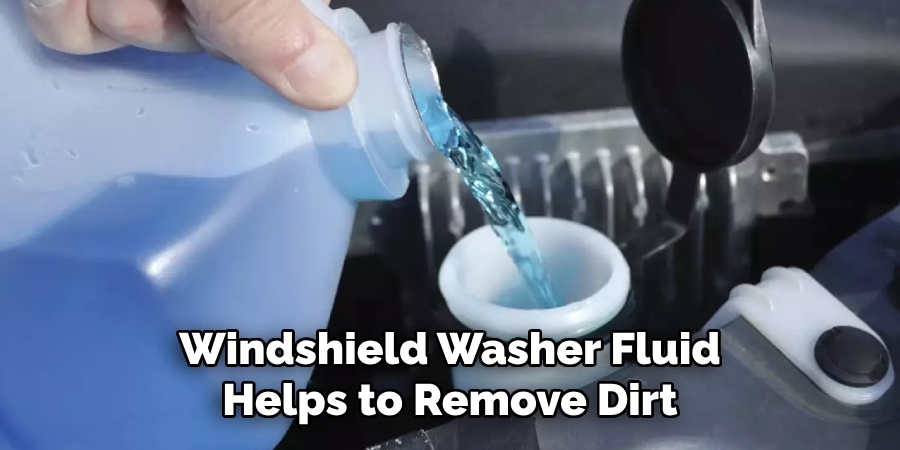
The windshield washer fluid helps to remove dirt and debris from your windshield, ensuring clear visibility while driving. It’s important to regularly check and refill the windshield washer fluid reservoir to ensure that it is not empty when needed. Most vehicles have a warning light on the dashboard that illuminates when the windshield washer fluid is low.
4. Use the Headlight Washer:
Once you’ve engaged the windshield washer, the headlight washer system will activate automatically in most Volkswagen models. This simultaneous operation ensures that both the windshield and headlights are cleaned effectively.
Some vehicles may have a separate control for the headlight washer; refer to your vehicle’s manual for specific instructions. Furthermore, it’s important to use the headlight washer during winter months when roads are salted and headlights can become covered in grime.
The headlight washer is a small yet crucial feature in Volkswagen cars that helps keep your headlights clean for optimal visibility while driving. It works by spraying a high-pressure jet of water onto the headlights, removing any dirt or debris that may have accumulated on the surface. This not only improves your visibility but also helps maintain the longevity of your headlights.
Additionally, using the headlight washer can also prevent potential damage to your windshield wipers. If there is a significant amount of dirt or debris on your headlights, it can get caught in the wiper blades and cause scratches or streaks on your windshield. By using the headlight washer, you eliminate this risk and ensure that your wipers are only coming into contact with a clean surface.
5. Monitor Headlight Washer Jets:
Observe the small washer jets located near the headlights. These jets spray washer fluid onto the headlights to remove dirt, grime, and other debris. Ensure that the washer jets are functioning correctly and that the fluid is reaching the headlights adequately.

If the washer jets are clogged, use a pin or needle to unclog them. If the fluid is not reaching the headlights properly, refill the washer fluid reservoir with a recommended solution.
Additionally, regularly check for any leaks in the headlight washer system. These leaks can be identified by wet spots near the washer jets or by low levels of washer fluid even after filling it up. If any leaks are detected, it is important to have them fixed as soon as possible to prevent further damage to the system.
It is also essential to check the alignment of the washer jets. This can be done by adjusting the angle of the jets using a small screwdriver. Make sure that they are aimed at the center of each headlight for maximum coverage and effectiveness.
6. Check Washer Fluid Levels:
Regularly inspect the washer fluid reservoir to ensure an adequate supply for both the windshield and headlight washer systems. Maintain the fluid level within the recommended range to ensure continuous and effective operation. Use a windshield washer fluid that is suitable for all-season use and won’t freeze in cold temperatures. If the washer fluid level is low, refill it as soon as possible to avoid running out during a journey.

When driving in winter conditions, make sure to use a windshield washer fluid that has an antifreeze solution. This will prevent the water from freezing and damaging the washer system. It’s important to regularly check the washer fluid levels especially during long journeys or when traveling through areas with a lot of dust, dirt or insects. Keeping the windshield and headlight washer systems in good condition is essential for maintaining visibility while driving.
It’s also important to regularly clean the nozzles of the washer system to prevent any blockages that may hinder its performance. Use a small pin or needle to gently clear any debris from the nozzles. This will ensure that the washer fluid is sprayed evenly and effectively onto the windshield and headlights.
7. Refill Washer Fluid as Needed:
If the washer fluid levels are low, refill the reservoir with an appropriate washer fluid. Use a funnel to minimize spills, and choose a fluid that meets Volkswagen’s specifications. Many washer fluids are available with additives to enhance cleaning and prevent freezing, especially in colder climates. Make sure to replace the cap securely after refilling.
It is important to regularly check and refill the washer fluid in your car. This simple maintenance task can ensure that you always have enough washer fluid for clear visibility while driving. In addition, using a specially formulated washer fluid can prevent damage to your windshield and wiper blades.
When choosing a washer fluid, it is important to check the specifications recommended by your car’s manufacturer. Using a fluid that does not meet these specifications may result in damage to your windshield or wiper blades. It is also important to note that different climates may require different types of washer fluids. For example, colder climates may benefit from using a fluid with added anti-freeze properties.
8. Address Washer Fluid Leaks:
If you notice any leaks in the headlight washer system or a rapid depletion of washer fluid, inspect the system for leaks or malfunctions. Leaks can lead to a loss of fluid and compromise the effectiveness of the headlight washer. Address any issues promptly to maintain optimal performance.
Additionally, keeping an eye on the level of washer fluid in your vehicle is important for overall safety and functionality. A low level of washer fluid can impair visibility and lead to dangerous driving conditions.
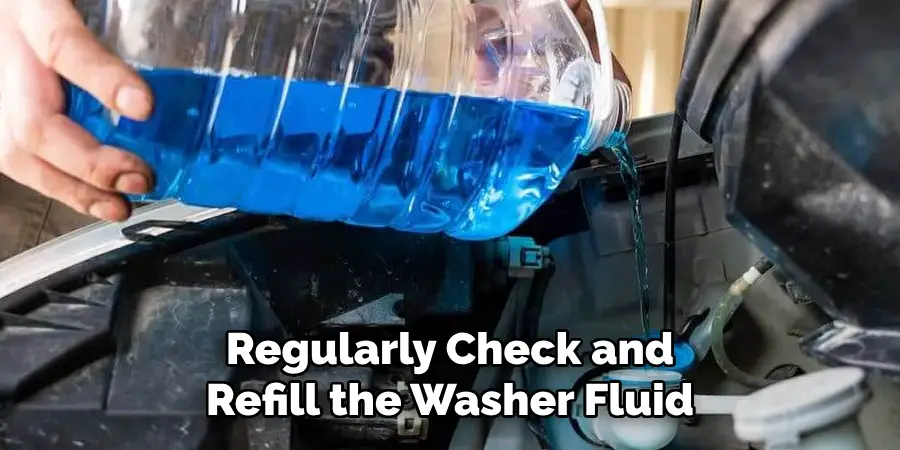
Regularly check and refill the washer fluid reservoir, especially before long drives or during the winter months when road salt can quickly dirty windshields. It’s also a good idea to visually inspect the condition of washer nozzles and hoses for any blockages or damage.
9. Use Headlight Washer System Intelligently:
Use the headlight washer system judiciously, especially in conditions where visibility is compromised due to dirt, mud, or salt on the road. While the system is effective, excessive use can deplete the washer fluid quickly, necessitating more frequent refills.
Additionally, using the system too often can also damage the paint on your car, especially if it is a new vehicle. It is recommended to use the headlight washer system only when absolutely necessary, such as after driving through particularly muddy or salty roads.
10. Maintain the Headlight Washer System:
Periodically clean the washer jets and ensure they are free from any blockages. Use a fine needle or pin to clear any debris that might obstruct the spray pattern. Regular maintenance contributes to the longevity and efficiency of the headlight washer system. However, if you notice that the system is not working correctly, it might be time for a more thorough inspection.
In addition to cleaning the washer jets, it is also essential to check the fluid levels and top up if necessary. The headlight washer system uses a special type of washer fluid that contains antifreeze to prevent freezing in cold weather conditions. It is vital to use the correct fluid to avoid any damage to the system.
It is also important to regularly inspect the hoses and connections of the headlight washer system. Over time, these components can become damaged or worn out, leading to leaks or malfunctions. Replace any damaged parts immediately to ensure proper functioning of the system.
In addition, it is recommended to use a soft cloth or sponge when cleaning the headlight washer nozzles to prevent any scratches or damage. Avoid using harsh chemicals or abrasive materials as they can cause harm to the delicate components of the system.
Conclusion
In conclusion, understanding and effectively using headlight washers in VW vehicles significantly contribute to driving safety and visibility, especially in adverse weather conditions. Whether equipped with automatic or manual headlight washer systems, VW owners can ensure clear and unobstructed vision on the road by following the outlined guidelines.
By familiarizing themselves with the activation process, maintaining adequate headlight washer fluid levels, and adhering to safety considerations, drivers enhance their ability to respond to changing visibility conditions effectively.
Moreover, regular inspection and troubleshooting of headlight washer systems ensure optimal performance and longevity. Thanks for reading, and we hope this has given you some inspiration on how to use headlight washer vw!

